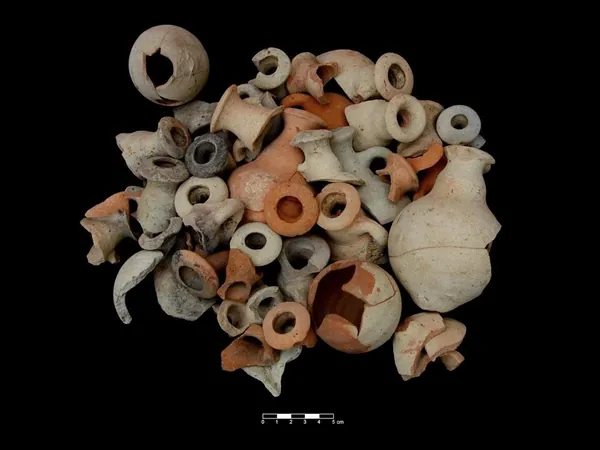
Unlocking the Fragrant Secrets: How Scent Shaped Phoenician Identity and Mediterranean Culture
2025-08-26
Author: Daniel
Unearthing the Essence of the Phoenicians
While archaeologists often dig up pottery, coins, and bones, the fragrances of ancient civilizations can be nearly invisible to history. A groundbreaking interdisciplinary study has sniffed out the once-cherished scents of Phoenician culture. By analyzing 51 ceramic oil vessels from Motya, a small island off the Sicilian coast, researchers reveal how aromatic oils played a pivotal role in shaping identity, memory, and cultural exchanges during the Iron Age Mediterranean.
A Closer Look at the Oil Vessels
These unassuming, narrow oil bottles, standing between 15 and 18 centimeters tall, date back to 8th to 6th centuries BCE. Their widespread discovery in homes, cemeteries, and religious sites highlights their versatile use across various contexts. The analysis traced their origins back to southern Phoenicia, covering areas from modern Beirut to the Carmel coast.
Scented Connections Across Cultures
The findings revealed that eight of the examined vessels contained traces of plant oils mixed with pine and mastic resin—substances historically connected to perfumes and preservation. This evidence suggests these bottles carried not just oils, but vital aromatic unguents that served as sensory ties to homeland traditions. For Phoenician settlers, these fragrances acted as emotional links to their roots, fostering shared practices wherever they settled while also being traded with local communities.
Beyond Trade: The Cultural Significance of Scent
Renowned as adept seafarers and merchants, the Phoenicians excelled in blending and migrating cultural practices. Aromatic materials were essential in daily life and rituals, forging connections between migrants and indigenous peoples. The continuous discovery of these oil vessels at Motya over two centuries suggests a sustained supply of these recognizable products, which held both practical and symbolic significance.
Aromatic Diplomacy in Action
Interestingly, these vessels weren't exclusive to Phoenician settlements; they appeared in elite contexts among non-Phoenician populations. Their presence hints at how scented oils became vital tools for building alliances and extending influence beyond their communities. In essence, the use of perfumes became a crucial aspect of cross-cultural interaction, spreading Phoenician customs throughout the western Mediterranean.
The Decline of the Scented Trade
This research aligns with broader patterns in Iron Age history. While the decline of these bottles has previously been linked to the rise of Carthage, new insights suggest that political instability in the Levant during the Neo-Babylonian period may have disrupted both production and exchange lines. This turmoil could account for the notable drop in these aromatic vessels' circulation by the end of the 6th century BCE.
The Scent of the Past: More Than Just Fragrances
Ultimately, this study highlights the untapped potential of exploring the sensory dimensions of history. The movement of peoples and goods involved not just physical migrations but also the elusive yet powerful experiences of smell and memory. Scents, while fleeting, were instrumental in forging identities and maintaining cultural heritage in new lands, illustrating their profound significance in the tapestry of human history.


 Brasil (PT)
Brasil (PT)
 Canada (EN)
Canada (EN)
 Chile (ES)
Chile (ES)
 Česko (CS)
Česko (CS)
 대한민국 (KO)
대한민국 (KO)
 España (ES)
España (ES)
 France (FR)
France (FR)
 Hong Kong (EN)
Hong Kong (EN)
 Italia (IT)
Italia (IT)
 日本 (JA)
日本 (JA)
 Magyarország (HU)
Magyarország (HU)
 Norge (NO)
Norge (NO)
 Polska (PL)
Polska (PL)
 Schweiz (DE)
Schweiz (DE)
 Singapore (EN)
Singapore (EN)
 Sverige (SV)
Sverige (SV)
 Suomi (FI)
Suomi (FI)
 Türkiye (TR)
Türkiye (TR)
 الإمارات العربية المتحدة (AR)
الإمارات العربية المتحدة (AR)